Gear up and get ready to learn about the growth hacking and tools that can help your business grow faster!
The term ‘growth hacking’ has a certain snazziness attached to it. As if to be a growth hacker you’re required to possess some high-octane skills that will differentiate you from a traditional lot of marketers.
While you don’t need any extra special abilities to be a growth hacker, it does require an enterprising mindset that will compel you to charge forward and do whatever it takes to achieve this concept’s singular goal – growth.
Even today, for too many people, growth hacking seems like a buzzword, but it is very much a tangible concept that has proven to show results for many startups.
The digital spectrum is ever-expanding. As we continue to build on ideas and innovate, the only way to survive online is by adapting and smartly maneuvering through every roadblock that comes your way.
For startups with limited resources, raging through unexpected circumstances and sustaining becomes difficult, which is why around 90% of them die within the first year of their inception.
This is where growth hacking comes into the picture. It’s a relatively new concept, but startups (now big companies) like Airbnb, Dropbox, Paypal, etc have benefited dearly by deploying growth hacking techniques.
What is Growth Hacking? (Definition)
This term was coined by Sean Ellis, the brains behind the whole concept, in 2010. It simply means using the least resources possible to expand your business in less time.
This technique is especially beneficial for startups, that need to maximize their growth output and gain a footprint in the market using minimal resources.
One thing that should be noted about growth hacking is that there is no pre-constructed formula that you can follow to fulfill your growth aspirations.
It requires constant experimentation, paired with creative acumen to gauge and implement what strategy works best for you. Growth hacking techniques could range from video marketing to influencer marketing, social media marketing and much more.
At its core, growth hacking means coming up with ‘hacks’ that will make it easier for you to drive growth, whether it’s customer acquisition you’re looking at or customer retention.

Let’s look at the example of Groove, a blogging startup that now earns $5 million as annual revenue. They credit their success to content marketing. They were about to go bankrupt and decided to contact content managers and influencers to completely revamp their content marketing strategies.
Groove spent 2 months on research, reaching out to small businesses to ask them what problems they were facing.
Once they realized that the problems these small businesses were facing were very similar to their own, they decided to share their own journey online, revealing how they expanded their business, backed by real numbers associated with their startup.
This idea ended up doing wonders for them! Honesty helped them garner a lot of reviews and website visitors because they were genuinely able to help their audience.
This is a classic example of a product-market fit growth hacking technique. In your early stages as a startup, you reach out to your customer base and find out what it is that they actually want, and how your product can help solve those problems.
There are many such inspiring examples, each startup has employed distinctive techniques to achieve staggering growth results.
Since growth hacking holds experimentation at the heart of its entire concept, a/b testing, and result analysis are also very important. You won’t simply be launching campaigns and waiting for them to show results.
You’ll have to collect data and analyze the viability of the techniques you’ve adapted so that you can proceed further with data-driven confidence and get the desired results.
Since growth hacking techniques could essentially involve various methods, each being different from the other, we’ve compiled a list of 21 best growth hacking tools that will aid you in all aspects of your growth hacking funnel, right from customer acquisition to customer retention and referrals.
Read more: Growth Marketing: What is it & How to Carry it out for your Business?
List of Best Growth Hacking Tools You Must Use!
1. elink.io
[/vc_column_text]

As we’ve discussed above Growth hacking is all about finding easier ways to fuel growth. A tool that could help you do things faster is also a growth hacking tool, and elink perfectly fits into that category.
elink is a one-stop solution to designing beautiful, curated newsletters, single web pages, blog content, and much more. The biggest USP of this product is that it helps you create all the above things in minutes.
With elink, you just have to add your links, and it will automatically organize your content into beautiful and aesthetically pleasing blocks, depending on the layout you choose.
elink offers 30+ layouts that you can choose from. You can customize the background color, font of the header, link images, and much more to make it completely personalized making it the best growth hacking tool.
elink also acts as a bookmarker, and its chrome extension allows you to bookmark all types of web content swiftly.
2. Colibri.io

Colibri is a growth hacking tool and one of the best ones out there if you want to make the most out of your SEO strategies. It integrates with Google Analytics and allows you to monitor the keywords around which your business is focused on.
Using this growth hacking tool you can also track the backlinks that your business receives, and check conversions for each SEO action taken.
One great thing about Colibri is that it allows you to track social mentions and conversations so that you can find prospects online and insert yourself into relevant conversations to talk about your brand.
3. Crazy egg
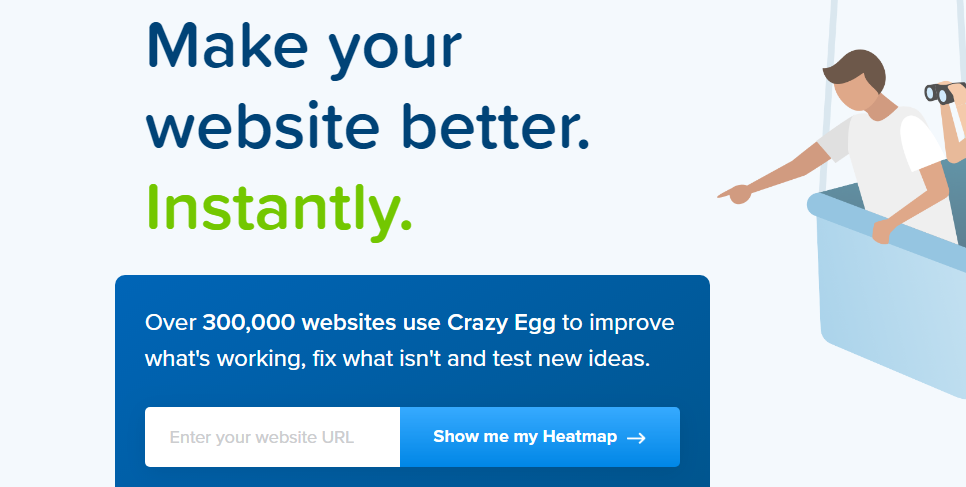
One of the most crucial metrics to measure how your content is performing online is to gauge how website visitors are spending their time on your website. Crazyegg is a growth hacking tool that allows you to do just that.
You can see:
- How far users are scrolling down your page
- How much time they spend on the page
- What do they click on, when they’re on the page. (images, inbound links, etc)
- How different segments of traffic are behaving on different pages.
- Heatmaps depict where visitors are spending most of their time.
4. Click to tweet
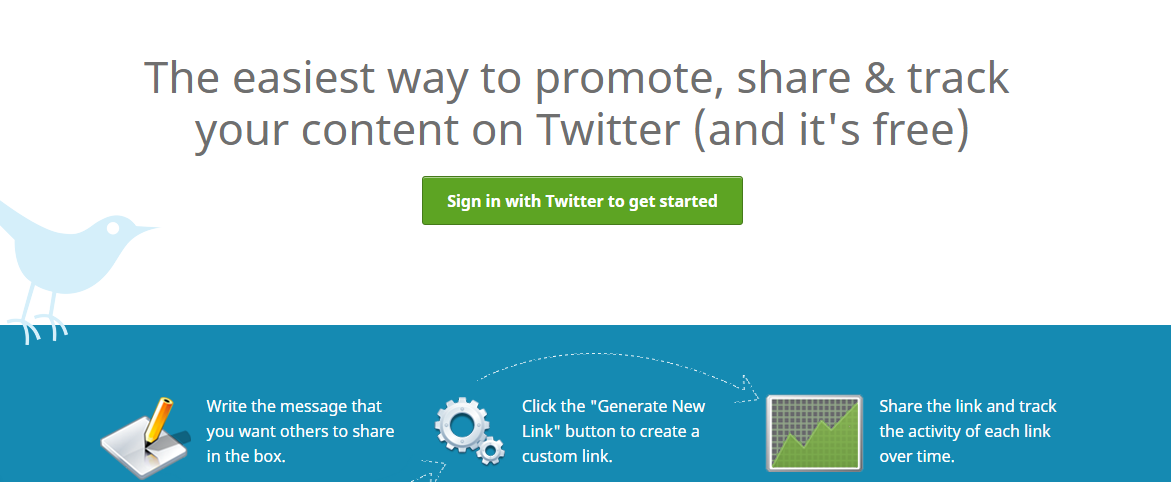
Click to Tweet is the easiest way to promote your brand online through Twitter, and it’s absolutely free. All you have to do is create a message that you want to share (in the box provided) and convert it into a custom link. Then, you can ask your audience to promote that link in exchange for some free gift or service.
This growth hacking tool then tells you how many times your Click to Tweet has been clicked on, and also how many times the link on your original tweet has been clicked on.
Read more : How A Growth Mindset Will Change Your Future
5. Totango

Totango is essentially a customer retention software, that helps you operate around your customers. It creates a detailed profile for your customer base so that your contact with them can be more personalized.
It will mostly aid you in post-sales activities, and help you track health signals across the entire customer life cycle.
This growth hacking tool also segregates your customers based on the profitability and revenue that they bring to the table so that you can easily see what customer segment you want to spend most of your time and resources on.
6. Visual Website Optimizer

This growth hacking tool is an a/b testing tool that will assist you in running multiple a/b tests with different conversion goals to see which one works the most. It boasts of having collaborated with big brands like eBay, Target, etc.
VWO empowers non-coders to create different versions/designs of their websites with the help of an easy-to-use editor, and assess which version procures the maximum conversion rate.
You can also evaluate how customers are spending time on your website, which makes them leave shopping carts, exit landing pages, and more.
7. Leadcrunch

Leadcrunch uses Artificial Intelligence to analyze your existing lead data, and then predict what new audiences will respond to your marketing strategies. This tool is definitely something to look into if you’re new in the market and want to explore what type of new customer profiles could want your product.
This growth hacking tool essentially works by finding out the look-a-like personalities of your existing customers, and then identifying which ones could be the next best potential clients.
8. Hootsuite

This growth hacking tool allows you to “manage multiple social networks, connect with customers, and grow your brand on social media.” You can post on multiple social media platforms at once, all from your Hootsuite dashboard.
This tool is a time saver for every social media manager, who has to publish the same post on different social media channels.
For a lot of businesses, small or big, their main audience exists largely on social media, and thus connecting with them through those channels becomes imperative.
Hootsuite allows you to send private messages to the targeted audience. It also integrates with Google Analytics and Facebook Insight, so that you can assess the success rate of your social media campaign.
Read more: 10 Productivity Tools That Will Help You Achieve More
9. Customer.io
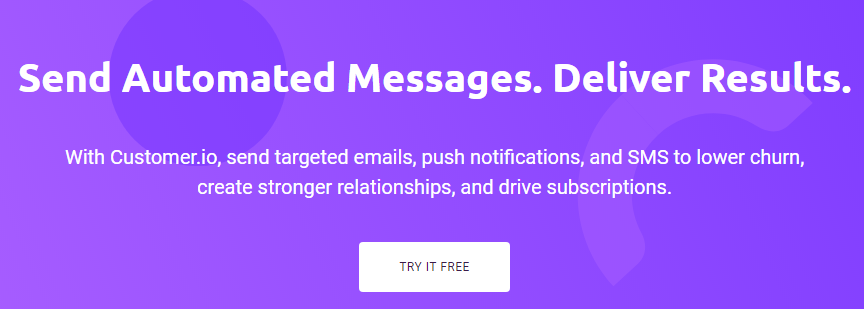
Customer.io is an email marketing tool that helps you send automated emails to website visitors or mobile app users. It segments your customer base, and stores all the information your company has about a customer in one place so that you can send them personalized messages.
You can do a/b testing to see which type of message is performing the most, what type of campaigns fetch you the most conversions and revenue using this growth hacking tool. Emails are automatically triggered when customer.io’s software notices a particular behavior.
10. Hubspot

If you’re a digital marketer or growth hacker, you’re definitely aware of Hubspot. Hubspot is an all-in-one inbound marketing software, that helps you with SEO, website analytics, CRM, email marketing campaigns, blogging, and much more.
This is one growth hacking tool you can definitely look into, as it helps target and juggle many different marketing strategies at one time, through one platform.
Read more: The What, Why, And How Of Lead Generation?
11. List Builder
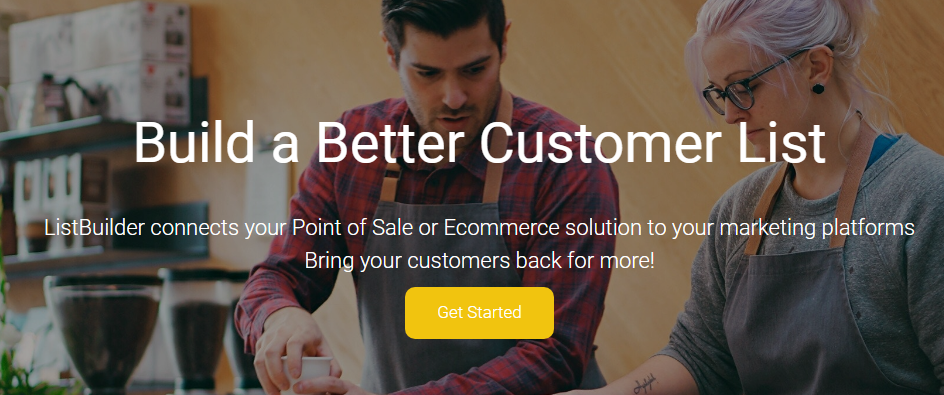
This growth hacking tool was built by Noah Kagen’s company. It’s a free tool that is available for both website and mobile users.
You can use it to manage a large list of customers, and send them messages whenever there is a new update or a product launch. It integrates with Aweber, MailChimp, SendInblue, etc. Every new customer is automatically synced with your lists.
12. Olark

Olark is a live chat software, that allows you to directly communicate with your customers through chat whenever they’re visiting your website. It also assesses how customers spend time on your website, and what are the most valuable customers by giving you detailed visitor insights and in-depth reporting.
13. Consumer Barometer
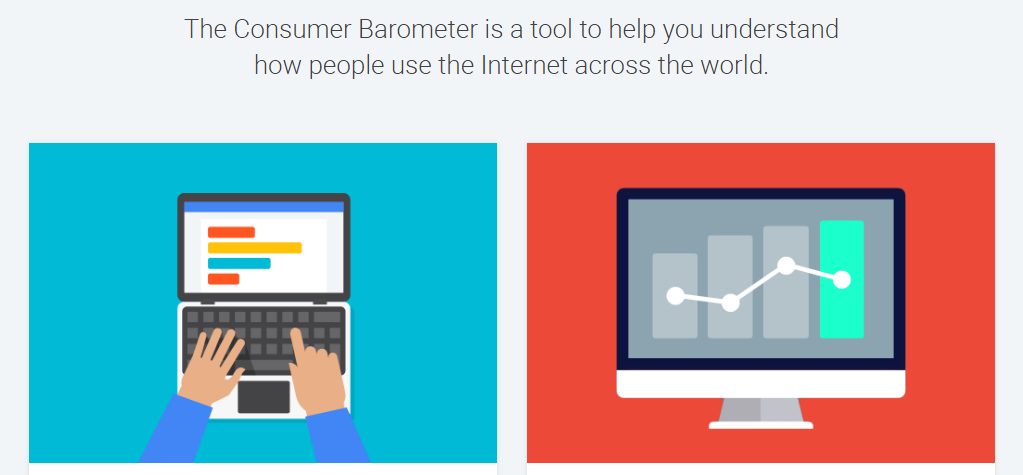
This is a growth hacking tool that will “help you understand how people use the internet across the world.”
It divides the internet audience into segments (for example brand advocates, millennials, etc) and shows how a particular segment spends time on the internet. It also gives you country-wise stats on how people make their purchase decisions online.
Consumer Barometer is a free tool that can come in handy when you’re performing market research to understand customer behavior online.
14. Qualaroo
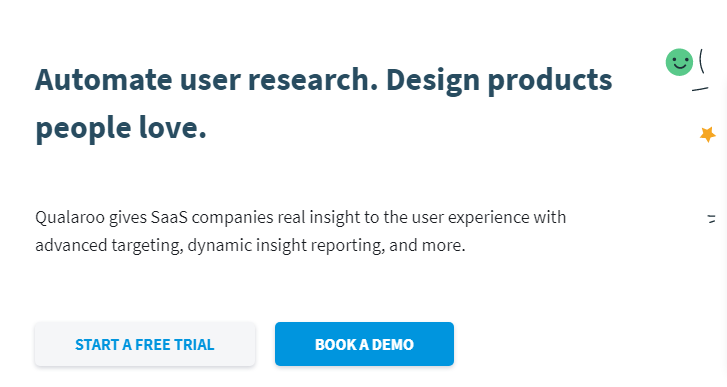
The fact that Qualaroo was created by Sean Ellis. It’s a website conversion improvement tool that provides sentiment analysis, a visual representation of how consumers feel visiting your website or using your product.
It gives you an insight into not just the how and what of customer behavior, but also the why of it. It’s mobile responsive and uses targeted questioning to better understand the needs of your customers.
15. Hunter.io
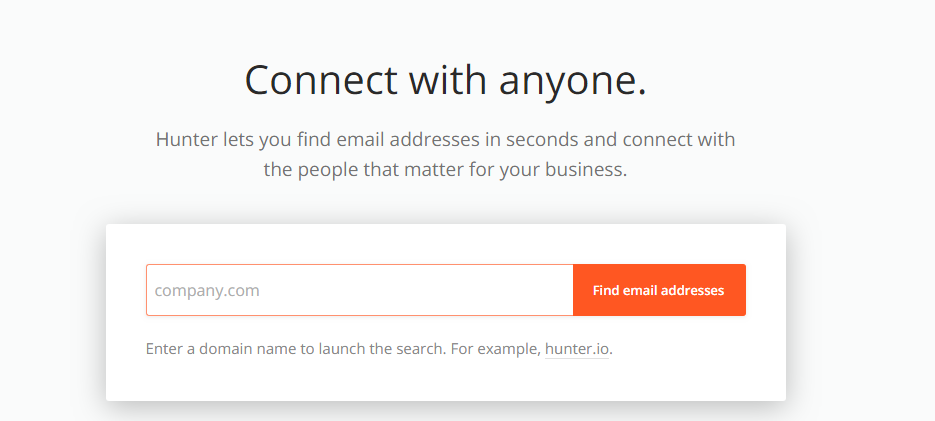
Startups often have to indulge in cold email marketing to spread the word about their product or service. Hunter.io is an email finder that we’ve tried and tested, and it works splendidly for the most part.
You just have to type in the person’s name and domain, and Hunter.io will fetch your emails using its aggregator, and along with the confidence score that it gives to each suggested email.
Recommendation: Emails that were verified or had a confidence score of above 90% did not bounce, so avoid the ones that have a confidence score of below 90%.
16. Similarweb

Similarweb is a free web analytics tool that will aid you in assessing your competitor’s website traffic metrics.
You simply have to add in your competitor’s website URL, and Similarweb will show you which social media website they’re getting their traffic from, which country opens their website, the average time people spend on their website, bounce rate, etc.
You can use this growth hacking tool to evaluate which social media platform you should drive traffic from, which geographical region you target, etc.
17. Crowdsignal

One of the most important mantras in growth hacking, especially for startups, is to gather and analyze customer feedback, Crowdsignals is a growth hacking tool that helps you do that by creating polls and surveys that you can integrate on your website.
You can edit your surveys according to your choice and brand image, and get real-time results from the same. You can then share these surveys through Excel, PDF, Google docs, CSV, etc using this growth hacking tool.
18. UberSuggest
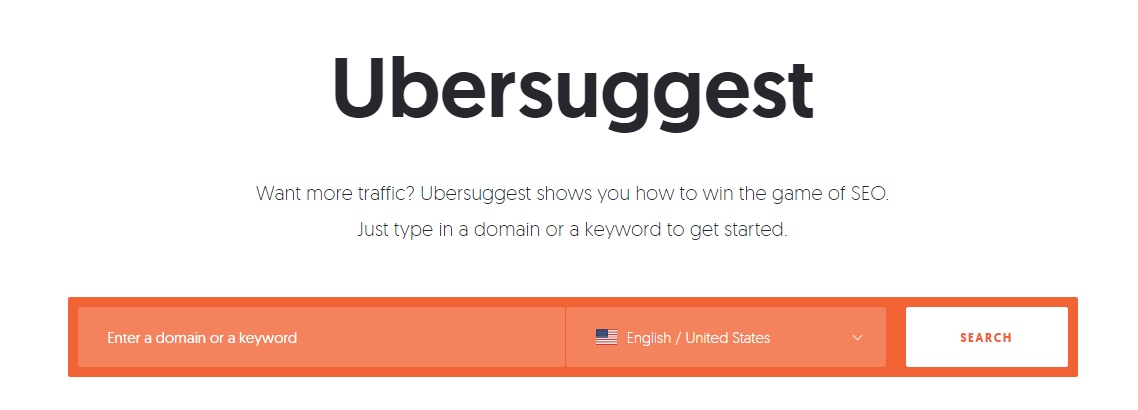
This a growth hacking tool created by Neil Patel, that assists you with Keyword research. It tells you the number of searches per month for your chosen keyword, the cost-per-click, as well as the websites that are ranking for that particular keyword.
It also suggests other popular keywords surrounding the one you’ve chosen. You can use this growth hacking tool to perform thorough keyword research and analyze what keyword or topic your next blog post will revolve around.
19. BuzzSumo

This is a growth hacking tool that will aid you if you want to go for influencer marketing. A lot of the top brands like Buzzfeed, Ted, etc have been using this tool to fulfill their content marketing needs. You can use Buzzsumo to find content topics and also influencers that engage in that particular topic.
You simply have to put your topic in the search bar and BuzzSumo will show you the online engagement of that topic on different platforms. It will also show you the most shared content around that topic so that you can get an idea of what’s trending online making it a great growth hacking tool.
20. Quora
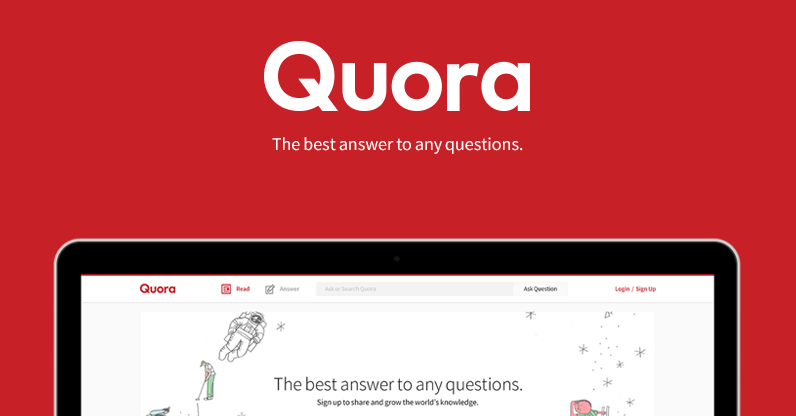
Quora is one of the best platforms out there that can help you drive your content marketing strategies to success. It gets more than a million traffic every day. Every product and service solves problems that customers face every day, and where do customers go with these problems? Quora!
Quora is a remarkable source to find out what problems people are facing, and how can make or improve your product to better solve people’s problems. You can also use Quora to promote your blog or content as a way of answering people’s questions.
21. Adroll

Adroll is a growth hacking tool that particularly works for retargeting, and can be used to optimize your ad campaigns. It tells which ad brings a customer to your website, and what platforms are best working for your ad campaign.
This growth hacking tool’s technology tells you what people are looking for online, and helps you customize your ads accordingly. It also shows you how low intent visitors become loyal customers.
Parting Words
Growth hacking might seem like a mammoth of a task, with so many tools to look into, and a vast array of possibly unnamed techniques that can be applied to drive growth. Fundamentally, it’s like solving a puzzle.
You create a detailed list of the obstacles your business is facing and then find out ‘hacks’, or creative ways to sort those problems using the best growth hacking tools we just mentioned above.
Further reads :
- 9 Best Organizational Tools To Get Rid Of Work Chaos!
- 13 Growth Marketing Strategies You Must Know About!
- Growth Plan: What is it & How to Create One? (Steps Included)
- How The Japanese Method Of Kaizen Will Transform Your Workplace
- Social Proof: 8 Ways to Use it to Get More Sales!



